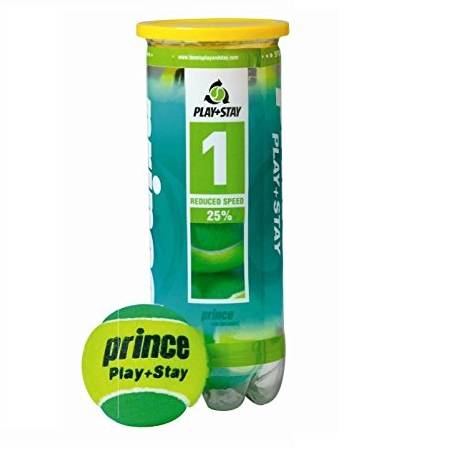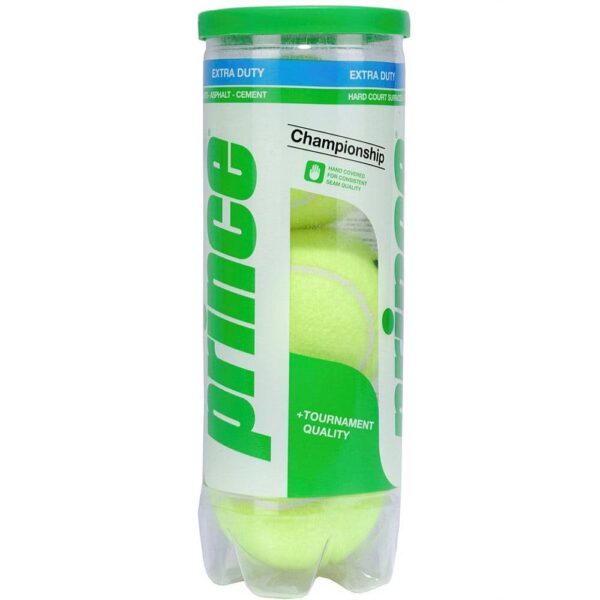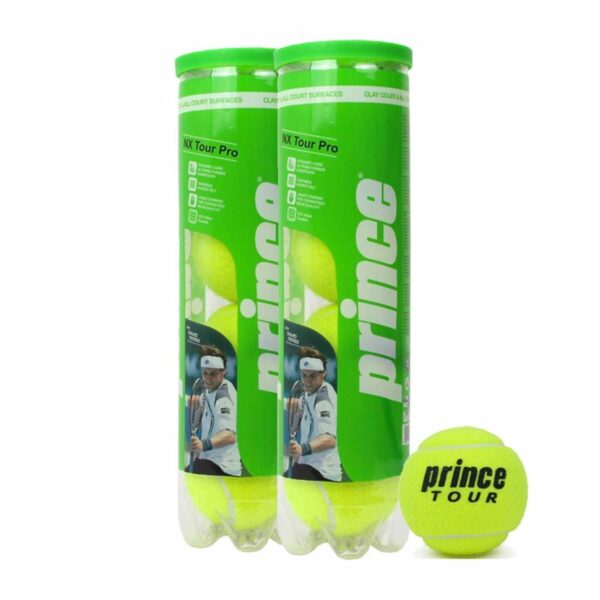Guide to Tennis Balls for Every Level
This guide is strictly comprehensive and not meant to rank any brands.
1. Best Professional Tennis Balls
To ensure that they gain a competitive edge on the opposition, professional tennis players go to great lengths and heights. When you are giving it your all on the court, singles or doubles, even the smallest detail can weigh significantly to your advantage.
A low-quality ball gets easily frayed and drags a lot when in the air, making it very hard to outwit your opponent. Here are some of the professional tennis balls that the market has to offer.
Dunlop Tennis Balls (Pro Level)
Among the top level tennis balls offered in the tournaments, Dunlop tennis balls are known for their extra bounce and durability throughout a game. Dunlop Fort line with Dunlop Rolland Garros being the official ball of French Open, which makes it probably the best tennis ball for clay courts.
Slazenger Tennis Balls (Pro Level)
Those of us who watch Wimbledon know that their balls labeled Ultra VIS are used in this tournament, which makes them one of the best tennis balls for grass courts.
Prince Tennis Balls (Pro Level)
Prince professional level tennis balls are sold under label Prince NX Tour. As long as they are in good condition, Price tennis balls play relatively well and typically used on clay or in lower tier professional competitions.
Babolat Tennis Balls (Pro Level)
When it comes to tennis gear and overall sporting accessories, Babolat has made some serious improvements. The most popular Babolat tennis balls are marketed under the Babolat Team label. While these tennis balls are a bit heavier, what they lack in quality is more than made up for by the extreme levels of durability.
Wilson Tennis Balls (Pro Level)
The official ball and automatic favourite for U.S. Open and Australian Open comes in Extra Duty for harder courts and Regular Duty for clay and indoor courts.
Gamma Tennis Balls (Pro Level)
If you have ever used a Gamma tennis ball (for example, their Gamma ProTour line), it’s no doubt you were left with mixed emotions. On one hand, the balls have outstanding performance, bounce, and speed; however, this lasts only a few hours.
Penn Tennis Balls (Pro Level)
Penn tennis balls are not only long lasting but can also be used in higher altitudes and hard or soft courts. Penn’s top tier balls are marketed under two brands: Penn ATP and Pro Penn Marathon (both have regular and extra duty felts for different types of courts).
Technifibre Tennis Balls (Pro Level)
While not as popular as the other brands, Technifibre tennis balls are slowly making their way to the top, right next to the big names. With the bouncing capabilities of the Dunlop and durability of the Babolat, Technifibre tennis balls are worth the wait. Check their Tecnifibre X-One line if you are looking for the best from their product range.
2. Best Tennis Balls for Intermediate Players
If you are a regular tennis player that doesn’t have to replace your tennis balls after every single match, then this is the field for you. These tennis balls are specifically aimed at the casual yet experienced players, but not on a competitive, professional level. If you only play about once or twice a week, the following balls should be perfect for you.
Dunlop Tennis Balls (Tier Two)
One of the best reasons for purchasing Dunlop tennis balls is that you can play confidently without fear of trade-offs. While the tier two Dunlop balls are not meant for professional matches, the manufacturer can’t really lower the quality standards too much on its Dunlop Championship or Dunlop Pro lines. And even if durability of these balls is slightly lower compared to the top level balls, a player at an intermediate level is unlikely to be negatively impacted by this.
One of the best tennis balls for tennis elbow sufferers is then Dunlop Abzorber tennis ball, with the manufacturer claiming it reduces impact on your arm by 15%.
Prince Tennis Balls (Tier Two)
Barely making it to the list of playable intermediate balls, tier two Prince Tennis balls (Prince Championship) may not offer the best durability, but they are popular for a casual game every now and then. Prince Championship tennis balls save you money but can’t stand much abuse.
Gamma Tennis Balls (Tier Two)
While sternly criticized by seasoned professionals, Gamma lower tier tennis balls are more than embraced by players on the amateur and intermediate level. The Gamma Championship balls are not built to last or age gracefully. They could be working perfectly as one player serves only to be ripped to shreds on the return ball; so make sure you utilize their initial performance to the fullest.
Penn Tennis Balls (Tier Two)
For the untrained eye or amateur glance, these tier two Penn tennis balls could easily pass for professional. Balls like the Penn Championship are not only ideal for the casual player, but they are also approved for lower-tier matches and major tourneys.
3. Best Tennis Balls for Beginners
Beginner tennis balls are usually found in the third tier and represent the lowest price and quality and every renowned brand manufacturers these tier three balls and they can be found in virtually all tennis stores.
When it comes to making tennis balls aimed for beginners, there is really not much of a difference between the major companies. Although each ball is sure to be inferior to all other higher tiers, they are ideal for people taking their first baby steps to becoming pros.
Since beginners lack much of the pros physical strength and do not hit the ball half as hard, these tennis balls take much longer to come apart and retain their bounce pretty well. However, the felt on them is neither top quality nor is it precisely made; overtime, the balls tend to have a lopsided bounce and even minor differences right out of the pack.
4. Best Tennis Balls for Practice
You are probably wondering how we can go any lower from beginner tennis balls right? Well, the good news that it is impossible to go lower. In fact, some tennis balls are actually better in all respects than some higher tier balls.
Practice tennis balls are those that are generic or which end up failing to pass a series of tests for the higher tiers. The most exciting thing about practice tennis balls is that players get the rare chance to deal with some championship or even professional level balls that failed to meet the set standards.
So, if you are simply looking for something fun and cheap, if your idea of a great shot is one where you didn’t completely miss, then you might want to look into practice tennis balls like Prince Trainer Balls, Gamma Practice and Penn Practice Coach.
5. Pressurized Vs Pressureless Tennis Balls
A tennis ball is typically made up of a rubber ball encased in a fuzzy fabric covering. The rubber core can either be solid, in which case the ball is pressureless. However, some balls have hollow rubber cores that are filled with pressurized air or nitrogen to become pressurized balls.
Pressurized Balls
These are probably the most common and come in your normal single can of three. Pressurized balls have compressed air in them, so they feel much livelier and bounce much higher straight out of the can. These balls are also very light and achieve a better spin response and higher speeds.
Since the can is vacuum sealed, the balls maintain integrity as long as they are in there. However, once taken out, they start losing pressure in a matter of weeks and become pretty much unplayable.
For people seeking quality above all else and have the spare coins to replace tennis balls often, pressurized balls offer a much better experience in the match.
Pressureless Tennis Balls
These balls have a solid rubber core and are therefore much heavier than their pressurized counterparts. This directly translates to enhanced durability since pressureless balls have a very long lifespan. Pressureless balls generally have less bounce and are perfect for intermediates, beginners and for practice lessons with ball machines.
What to Look for When Buying Tennis Balls
With all this new information about tennis balls, it is now much easier for you to get the perfect match for your lifestyle. However, it is never as easy and as straight forwards as it seems. Choosing a set of tennis balls requires a lot more than just knowing the type and cost.
Tiers
In the segments above, we have gone through all the different tiers that manufacturers use to rate their balls. From the expensive but high performing tier one balls to the cheaper and less reliable lower tiers it’s all about knowing what you want and asking for it.
If you are in it to win it, go for tier one professional or level two intermediate balls. But if you just enjoy a good game or just play for recreation, then beginner and practice tennis balls might be just what the doctor ordered.
High Altitude, Regular and Extra Duty
The lingo might be a bit confusing at first, but it’s all really another way of describing the court. Regular balls play well on indoor and clay courts while extra duty just means hard court balls. High altitude balls are made so that the higher altitude does not affect the play.
Durability
While all balls have their own individual life span, it is always better to go for a ball that is built to last. Pressurized balls are known for a shorter life cycle, but certain components can tell you if it will last longer than others. Reinforced rubber coating and extra durable felts are signs that your ball will last much longer and perform better.
















